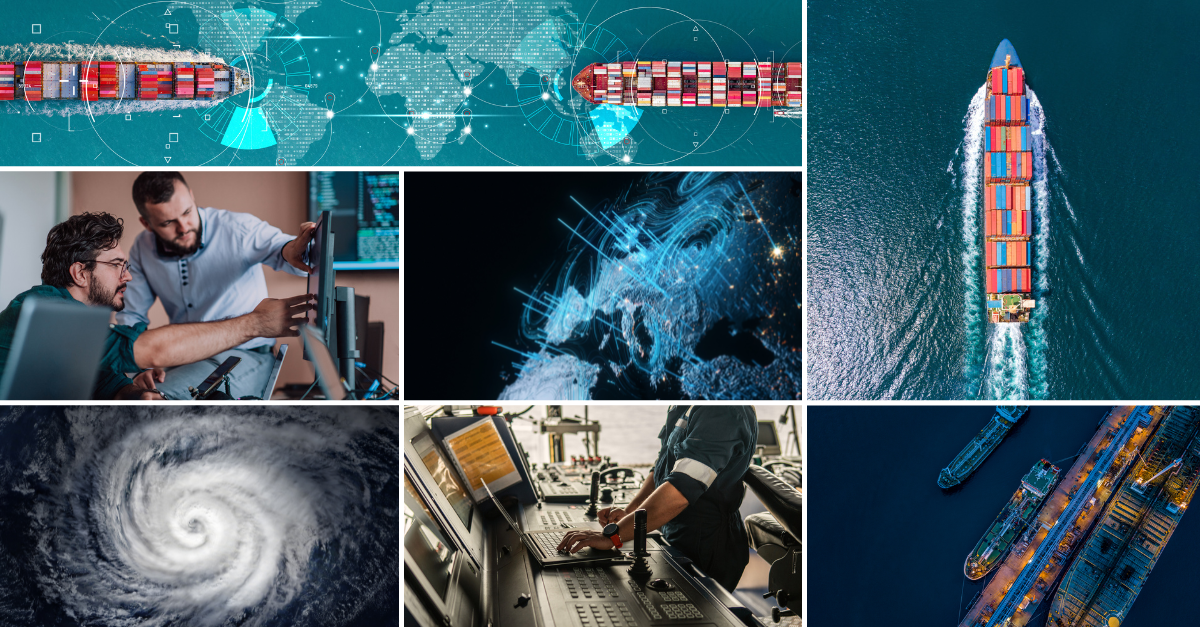StormGeo’s Voyage Intelligence Connects Efficiency and Decarbonization

Shipping today faces mounting challenges, from rising fuel costs and stricter carbon regulations to unpredictable weather, congested ports, and shifting trade routes. In this complex environment, every operational decision carries financial and environmental weight.
That’s why StormGeo empowers operators to turn data into decisive action. Voyage Intelligence, StormGeo’s digital backbone for smarter shipping operations, provides shipowners, operators, and charterers a clear way to save fuel, reduce emissions, and stay compliant — all within one integrated platform.
Efficiency Is the Fastest Route to Decarbonization
“As the industry adopts new energy sources and technologies, innovation will continue to optimize how ships operate,” says Petter Andersen, VP Shipping at StormGeo. “For every vessel, improving operational efficiency remains the fastest and most cost-effective way to reduce emissions and strengthen performance.”
Voyage Intelligence delivers exactly that. It connects weather forecasts, vessel performance data, and fuel analytics to identify the most efficient routes, speeds, and bunker strategies for every voyage. The result: measurable fuel savings that immediately translate into both lower costs and lower carbon output.
“In 2024, StormGeo supported more than 75,000 voyages worldwide, helping our customers save around 0.6 million tonnes of fuel and 1.8 million tonnes of CO2,” says Andersen. “Those reductions were achieved through smarter decision-making, voyage by voyage.”
From Weather Routing to Integrated Intelligence
With more than 25 years of expertise in maritime forecasting, StormGeo has evolved from weather routing to a connected decision platform that spans the entire voyage lifecycle.
Voyage Intelligence combines predictive analytics, machine learning, and vessel-specific models with real-time weather and compliance data. The platform enables teams to plan, monitor, and evaluate voyages with precision by improving safety, optimizing bunker procurement, and aligning with regulations such as the Carbon Intensity Indicator (CII) and EU Emissions Trading System (EU ETS).
“Efficiency and sustainability aren’t competing priorities,” says Andersen. “Every drop of fuel saved supports both profitability and compliance.”
Seamless Integration for Ship and Shore Operations
Digitalization has given operators more data than ever, but not always more clarity. Performance reports, fuel logs, and emissions data often sit in disconnected systems. Voyage Intelligence brings all that information together in a single environment, ensuring that bridge teams, operators, and commercial managers work from the same set of validated insights.
“When everyone, from the master to the commercial manager, sees the same data, decisions become faster and more aligned,” says Andersen. “The outcome is greater efficiency, lower risk, and stronger operational performance.”
Understanding the True Cost of Every Voyage
Every voyage involves a series of decisions. They range from route and speed to timing, weather strategy, and compliance, each carrying financial and environmental consequences.
Voyage Intelligence links route optimization, fuel planning, and compliance exposure so operators can see how daily choices affect fuel use, schedule reliability, and carbon exposure across the entire voyage lifecycle. By integrating route optimization, vessel performance, weather, and regulatory data, the system models multiple operational scenarios in real time.
It helps teams evaluate the full impact of each decision, considering time, cost, and emissions, and choose the option that delivers the greatest overall efficiency.
Human Expertise, Enhanced by Technology
Although Voyage Intelligence automates much of the analysis, human expertise remains central. With expert route validation from StormGeo’s route analysts, customers can ensure that safety, compliance, and practicality always come first.
“Automation is transforming how we operate, and in most cases delivers exactly what is needed,” says Andersen. “Our role is to combine intelligent automation with human expertise, ensuring every decision is both efficient and safe.”
Compliance That Drives Performance
Regulatory frameworks such as CII, EU ETS, and FuelEU Maritime are redefining operational strategy. With Voyage Intelligence, compliance becomes an integral part of voyage planning rather than an afterthought.
Operators can forecast emissions, efficiency ratings, and carbon costs before a voyage begins, transforming compliance from an administrative task into a performance advantage. Companies that can demonstrate verifiable, efficient operations are already better positioned to attract cargo owners, financing, and partnerships.
From Operational Insight to Fuel Transition
“As shipping explores alternative fuels and hybrid propulsion, one truth remains: technology alone won’t deliver the transition — intelligence will,” says Andersen. “Voyage Intelligence is designed to evolve with emerging fuel and propulsion technologies, providing the digital foundation that connects today’s operations with tomorrow’s energy landscape.”
StormGeo continues to invest in artificial intelligence and simulation tools that help operators model routes, fuel types, and cost scenarios before departure. These capabilities help fleets make data-driven decisions that balance long-term planning with optimized performance, safety, and sustainability today.
From Efficiency Gains to Sustainable Growth
In an environment where every tonne of fuel and every tonne of carbon carry a cost, efficiency is more than good practice. It’s good business.
Voyage Intelligence helps fleets improve efficiency, simplify compliance, and move confidently toward decarbonization.
For StormGeo, the strategy is clear: every step toward efficiency strengthens both profitability and sustainability. “Smarter voyages mean stronger returns for the industry and the planet alike,” Andersen concludes.
This article is sponsored by StormGeo. For more information, visit StormGeo online.
The opinions expressed herein are the author's and not necessarily those of The Maritime Executive.
